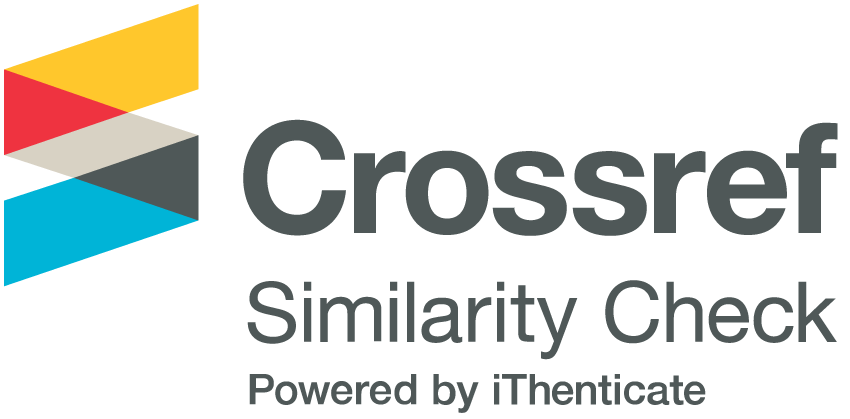Prevalencia y decisiones académicas del alumnado con trastorno del aprendizaje de la lectura (dislexia del desarrollo) en Andalucía (España)
DOI:
https://doi.org/10.54790/rccs.53Palabras clave:
Dislexia, Prevalencia, Preferencias vocacionalesResumen
Apenas hay información sobre la prevalencia de la dislexia del desarrollo en España y sobre las decisiones académicas del alumnado con dislexia del desarrollo (DD) tras la enseñanza obligatoria. Se estudian estos dos aspectos en Andalucía, con una población de referencia de 944.118 estudiantes de 6-16 años, 11.705 están calificados con DD, con prevalencia observada del 1,24% (criterio -2 desviaciones típicas (DT) debajo de la media) y prevalencia estimada del 3,6% (criterio -1,5DT debajo de la media). Unos 31.700 alumnos podrían presentar dificultades asociadas a DD y no estar identificados. La proporción de prevalencia de DD en Andalucía por sexo es de 1,3 niños/niña. Los resultados más bajos se encuentran en los municipios de Sevilla, Alcalá de Guadaira, Algeciras, Chiclana, Jerez, La Línea de la Concepción, El Puerto de Santa María, Sanlúcar, Jaén, Benalmádena, Marbella y Torremolinos. La edad de diagnóstico está sobre los 10 años, siendo necesario bajar esta edad hasta los 6-7. En total, en Andalucía se cuentan 16.600 alumnos con DD en enseñanzas no universitarias, 4.415 realizan estudios posobligatorios, encontrando que la Formación Profesional es la opción más frecuente en el alumnado con DD sin que esta decisión dependa del sexo.
Descargas
Métricas
Citas
American Psychiatric Association (APA) (2013). Manual diagnóstico y estadístico de trastornos mentales: DSM-5 ™ (5ª ed.). American Psychiatric Publishing, Inc. https://doi.org/10.1176/appi.books.9780890425596 DOI: https://doi.org/10.1176/appi.books.9780890425596
Anastasiou, D. y Polychronopoulou, S. (2009). Identification and overidentification of specific learning disabilities (dyslexia) in GREECE. Learning Disability Quarterly, 32(2), 55-69. https://doi.org/10.2307/27740357 DOI: https://doi.org/10.2307/27740357
Andreola, C., Mascheretti, S., Belotti, R., Ogliari, A., Marino, C., Battaglia, M. y Scaini, S. (2021). The heritability of reading and reading-related neurocognitive components: A multi-level meta-analysis. Neuroscience & Biobehavioral Reviews, 121, 175-200. https://doi.org/10.1016/j.neubiorev.2020.11.016 DOI: https://doi.org/10.1016/j.neubiorev.2020.11.016
Angerri, X. (2005). Dislexia. En M. Puyuelo (Ed.). Casos clínicos en logopedia 2 (pp. 253-287). Madrid: Masson.
Barbiero, C., Montico, M., Lonciari, I., Monasta, L., Penge, R., Vio, C., Tressoldi, P. E., Carrozzi, M., de-Petris, A., de-Cagno, A. G., Crescenzi, F., Tinarelli, G., Leccese, A., Pinton, A., Belacchi, C., Tucci, R., Musinu, M., Tossali, M. L., Antonucci, A. M., … Ronfani, L. (2019). The lost children: The underdiagnosis of dyslexia in Italy. A cross-sectional national study. PLoS ONE, 14(1). https://doi.org/10.1371/journal.pone.0210448 DOI: https://doi.org/10.1371/journal.pone.0210448
Berkeley, S., Mastropieri, M. A. y Scruggs, T. E. (2011). Reading Comprehension Strategy Instruction and Attribution Retraining for Secondary Students With Learning and Other Mild Disabilities. Journal of Learning Disabilities, 44(1), 18-32. https://doi.org/10.1177/0022219410371677 DOI: https://doi.org/10.1177/0022219410371677
Bosch-Bayard, J., Girini, K., Biscay, R. J., Valdes-Sosa, P., Evans, A. C. y Chiarenza, G. A. (2020). Resting EEG effective connectivity at the sources in developmental dysphonetic dyslexia. Differences with non-specific reading delay. International Journal of Psychophysiology, 153, 135-147. https://doi.org/10.1016/j.ijpsycho.2020.04.021 DOI: https://doi.org/10.1016/j.ijpsycho.2020.04.021
Botella-Ausina, J. y Sánchez-Meca, J. (2015). Meta-análisis en ciencias sociales y de la salud. Madrid: Síntesis.
Brimo, K., Dinkler, L., Gillberg, C., Lichtenstein, P., Lundström, S. y Åsberg-Johnels, J. (2021). The co-occurrence of neurodevelopmental problems in dyslexia. Dyslexia, 27(3), 277-293. https://doi.org/10.1002/dys.1681 DOI: https://doi.org/10.1002/dys.1681
Camarata, S. y Woodcock, R. (2006). Sex differences in processing speed: Developmental effects in males and females. Intelligence, 34(3), 231-252. https://doi.org/https://doi.org/10.1016/j.intell.2005.12.001 DOI: https://doi.org/10.1016/j.intell.2005.12.001
Carrillo, M. S., Alegría, J., Miranda, P. y Sánchez-Pérez, N. (2011). Evaluación de la dislexia en la escuela primaria: Prevalencia en español. Escritos de Psicología / Psychological Writing, 4(2), 35-44. https://doi.org/10.5231/psy.writ.2011.1407 DOI: https://doi.org/10.5231/psy.writ.2011.1407
Cheruiyot, I. y Muthoni-Mathai, M. K. (2011). Prevalence of Dyslexia among Children Aged 7 to 9 in Nairobi, Kenya. Journal for the Education of the Gifted, 10(32), 47-74. http://erepository.uonbi.ac.ke/handle/11295/94938#.YjhO849TGgU.mendeley
Cheyney-Collante, K., Gonsalves, V. y Giuliani, S. (2021). Online Dyslexia Professional Development for Diverse Practitioners: A Multiple-Case Study. Teacher Education and Special Education (November 2021). https://doi.org/10.1177/08884064211050344 DOI: https://doi.org/10.1177/08884064211050344
Costa-Ball, C. D. (2021). Estudio epidemiológico del déficit lector en educación primaria en Uruguay [Tesis doctoral]. Universidad de Murcia. http://hdl.handle.net/10201/115024
Cuadro, A., Von-Hagen, A. y Costa-Ball, D. (2017). Diferencias procedimentales en el cálculo de la prevalencia del retraso lector en escolares hispanoparlantes. Estudios de Psicología, 38(1), 169-197. https://doi.org/10.1080/02109395.2016.1268388 DOI: https://doi.org/10.1080/02109395.2016.1268388
Cuetos, F., Arribas, D., Suárez-Coalla, P. y Martínez-García, C. (2020). PROLEXIA. Diagnóstico y Detección Temprana de la Dislexia. Manual. Madrid: TEA.
Cuetos, F., Rodríguez, B., Ruano, E. y Arribas, D. (2007). Prolec-R. Batería de Evaluación de los Procesos Lectores, Revisada. Manual. Madrid: TEA.
Dagnino, J. (2014). La distribución normal. Bioestadística y epidemiología. Revista Chilena de Anestesiología, 43(2), 116-121. https://doi.org/10.25237/revchilanestv43n02.08 DOI: https://doi.org/10.25237/revchilanestv43n02.08
Dale, P. S., McMillan A. J., Hayiou-Thomas M. E. y Plomin R. (2014). Illusory recovery: Are recovered children with early language delay at continuing elevated risk? American Journal of Speech-Language Pathology, 23(3), 437-447. https://doi.org/10.1044/2014_AJSLP-13-0116 DOI: https://doi.org/10.1044/2014_AJSLP-13-0116
Deacon, L., Macdonald, S. J. y Donaghue, J. (2020). «What’s wrong with you, are you stupid?» Listening to the biographical narratives of adults with dyslexia in an age of ‘inclusive’ and ‘anti-discriminatory’ practice. Disability and Society, 35, 1-21. https://doi.org/10.1080/09687599.2020.1815522 DOI: https://doi.org/10.1080/09687599.2020.1815522
Defior-Citoler, S., Fonseca, L. E., Gottheil, B., Aldrey, A., Pujals, M., Rosa, G., Jiménez-Fernández, G. y Serrano-Chica, F. (2006). LEE. Test de Lectura y Escritura en Español. Manual. Barcelona: Paidós.
De-Reyes-Aragón, C., Lewis-Harb, S., Mendoza-Rebolledo, C., Neira-Mezza, D., León-Jacobus, A. y Peña-Ortiz, M. (2008). Estudio de prevalencia de dificultades de lectura en niños escolarizados de 7 años de Barranquilla (Colombia). Psicología desde el Caribe, 22, 37-49. https://www.redalyc.org/articulo.oa?id=21311866004
Diakogiorgi, K. y Tsiligirian, E. (2016). Parents’ and school career counsellors’ evaluations of the occupational competence of children with dyslexia. The European Journal of Counselling Psychology, 4(1), 32-61. https://doi.org/10.5964/ejcop.v4i1.97 DOI: https://doi.org/10.5964/ejcop.v4i1.97
Díaz-Quijano, F.A. (2016). Regresiones aplicadas al estudio de eventos discretos en epidemiología. Revista de La Universidad Industrial de Santander. Salud, 48(1), 9-15. https://doi.org/10.18273/revsal.v48n1-2016001 DOI: https://doi.org/10.18273/revsal.v48n1-2016001
Donato, A., Muscolo, M., Arias-Romero, M., Caprì, T., Calarese, T. y Olmedo-Moreno, E. M. (2022). Students with dyslexia between school and university: Post-diploma choices and the reasons that determine them. An Italian study. Dyslexia, 28(1), 110-127. https://doi.org/10.1002/dys.1692 DOI: https://doi.org/10.1002/dys.1692
Ehri, L. C., Nunes, S. R., Stahl, S. A. y Willows, D. M. (2001). Systematic phonics instruction helps students learn to read: Evidence from the national reading panel’s meta-analysis. Review of Educational Research, 71(3), 393-447. https://doi.org/10.3102/00346543071003393 DOI: https://doi.org/10.3102/00346543071003393
Escalante-Angulo, C. (2004). El tamaño de una muestra en un estudio de prevalencia. Ciencia y Tecnología para la salud visual y ocular, 2(2). https://ciencia.lasalle.edu.co/svo/vol2/iss2/8/
Fawcett, A. J. y Nicolson, R. I. (2011). DST-J. Test para la Detección de la Dislexia en Niños. Manual. Madrid: TEA.
Fluss, J., Ziegler, J., Ecalle, J., Magnan, A., Warszawski, J., Ducot, B., Richard, G. y Billard, C. (2008). Prevalence of reading disabilities in early elementary school: impact of socioeconomic environment on reading development in 3 different educational zones. Archives de Pediatrie: Organe Officiel de La Societe Francaise de Pediatrie, 15(6), 1049-1057. https://doi.org/10.1016/j.arcped.2008.02.012 DOI: https://doi.org/10.1016/j.arcped.2008.02.012
Galuschka, K., Ise, E., Krick, K. y Schulte-Körne, G. (2014). Effectiveness of treatment approaches for children and adolescents with reading disabilities: A meta-analysis of randomized controlled trials. PLoS ONE, 9(2). https://doi.org/10.1371/journal.pone.0089900 DOI: https://doi.org/10.1371/journal.pone.0089900
Galve-Manzano, J. L. (2020). BECOLE-R: Una herramienta actualizada para evaluar la lectura, la escritura, la dislexia y la disgrafía. Revista Digital EOS Perú, 8(1), 19-36. https://revistaeos.net.pe/index.php/revistadigitaleos/article/view/40
Gobierno Canarias (2010). Orden 13 diciembre 2010, que regula la atención al alumnado con necesidades específicas de apoyo educativo en Comunidad Autónoma de Canarias. Boletín Oficial Canarias, 250, 32374-32398. http://sede.gobcan.es/boc/boc-a-2010-250-7036.pdf
Gobierno Castilla y León (2019). Acuerdo de Mesa de las Cortes de Castilla y León por el que se ordena publicación del Informe Anual correspondiente al año 2018 remitido por el Procurador del Común de Castilla-León. Boletín Oficial de las Cortes de Castilla y León, 12, 30/08/2019, 132-1066. https://2004.ccyl.es/SIRDOC/PDF/PUBLOFI/BO/CCL/10L/BOCCL1000012A.pdf#page=2
González-Martín, D., Jiménez-González, J. E., Rodríguez, C. y Díaz-Megolla, A. (2013). Dislexia en adolescentes españoles. Revista de Psicología y Educación, 8(2), 31-49. http://www.revistadepsicologiayeducacion.es/pdf/89.pdf
González-Valenzuela, M. J. y Martín-Ruiz, I. (2020). Assessing dyslexia at six year of age. Journal of Visualized Experiments, 159, 1-12. https://doi.org/10.3791/60858 DOI: https://doi.org/10.3791/60858
Hulme, C. y Snowling, M. J. (2016). Reading disorders and dyslexia. Current opinion in pediatrics, 28(6), 731-735. https://doi.org/10.1097/MOP.0000000000000411 DOI: https://doi.org/10.1097/MOP.0000000000000411
Ingesson, S. G. (2007). Growing up with dyslexia: Interviews with teenagers and young adults. School Psychology International, 28(5), 574-591. https://doi.org/10.1177/0143034307085659 DOI: https://doi.org/10.1177/0143034307085659
Jiménez, J. E., García, C., Siegel, L. S., O´Sanaban, I., García, E. y Rodríguez, C. (2011). Gender ratio and cognitive profiles in dyslexia: a cross-national study. Reading and Writing, 24, 729-747. https://doi.org/10.1007/s11145-009-9222-6 DOI: https://doi.org/10.1007/s11145-009-9222-6
Jiménez, J. E., Guzmán, R., Rodríguez, C. y Artiles, C. (2009). Prevalencia de las dificultades específicas de aprendizaje: La dislexia en español. Anales de Psicología, 25(1), 78-85. https://revistas.um.es/analesps/article/view/71521
Jiménez, J. E., Rodríguez, C. y Ramírez, G. (2009). Spanish developmental dyslexia: Prevalence, cognitive profile, and home literacy experiences. Journal of Experimental Child Psychology, 103(2), 167-185. https://doi.org/10.1016/j.jecp.2009.02.004 DOI: https://doi.org/10.1016/j.jecp.2009.02.004
Jiménez, J. E., Siegel, L. S. y López, M. R. (2003). The Relationship Between IQ and Reading Disabilities in English-Speaking Canadian and Spanish Children. Journal of Learning Disabilities, 36(1), 15-23. https://doi.org/10.1177/00222194030360010301 DOI: https://doi.org/10.1177/00222194030360010301
Johnson, R. y Kuby, P. (2012). Elementary Statistic. Cengage Learning.
Junta de Andalucía (2017). Modificación 8 marzo 2017 del Anexo I de Circular 10/09/2012 de Dirección General Participación y Equidad, que establece criterios y orientaciones para registro y actualización de datos en el censo del alumnado con necesidades específicas de apoyo educativo en sistema de información Séneca. https://n9.cl/9iwx
Junta de Andalucía (2021a). Estadística sobre alumnado escolarizado en sistema educativo andaluz, a excepción del universitario. Estadística-cartografía (actualizado a 21/05/2021). https://www.juntadeandalucia.es/export/drupaljda/producto_estadistica/19/06/Datos%20avance%20alumnado%202020_2021_0.xls
Junta de Andalucía (2021b). Consejería de Educación y Deporte: Estadística y cartografía. https://juntadeandalucia.es/organismos/educacionydeporte/servicios/estadistica-cartografia.html
Krivec, T., Košak-Babuder, M., Godec, P., Weingerl, P. y Stankovič-Elesini, U. (2020). Impact of digital text variables on legibility for persons with dyslexia. Dyslexia, 26(1), 87-103. https://doi.org/10.1002/dys.1646 DOI: https://doi.org/10.1002/dys.1646
Lewandowski, L. J., Lovett, B. J. y Rogers, C. L. (2008). Extended Time as a Testing Accommodation for Students With Reading Disabilities. Journal of Psychoeducational Assessment, 26(4), 315-324. https://doi.org/10.1177/0734282908315757 DOI: https://doi.org/10.1177/0734282908315757
Lin, Y., Zhang, X., Huang, Q., Lv, L., Huang, A., Li, A., Wu, K. y Huang, Y. (2020). The prevalence of dyslexia in primary school children and their Chinese literacy assessment in Shantou, China. International Journal of Environmental Research and Public Health, 17(19), 1-12. https://doi.org/10.3390/ijerph17197140 DOI: https://doi.org/10.3390/ijerph17197140
Lindstrom, J. H. (2007). Determining Appropriate Accommodations for Postsecondary Students with Reading and Written Expression Disorders. Learning Disabilities Research & Practice, 22(4), 229-236. https://doi.org/10.1111/j.1540-5826.2007.00251.x DOI: https://doi.org/10.1111/j.1540-5826.2007.00251.x
Lithari, E. (2019). Fractured academic identities: dyslexia, secondary education, self-esteem and school experiences. International Journal of Inclusive Education, 23(3), 280-296. https://doi.org/10.1080/13603116.2018.1433242 DOI: https://doi.org/10.1080/13603116.2018.1433242
Liu, L., Wang, J., Shao, S., Luo, X., Kong, R., Zhang, X. y Song, R. (2016). Descriptive epidemiology of prenatal and perinatal risk factors in a Chinese population with reading disorder. Scientific Reports, 6(1), 36697. https://doi.org/10.1038/srep36697 DOI: https://doi.org/10.1038/srep36697
Lyon, G. R., Shaywitz, S. E. y Shaywitz, B. A. (2003). A definition of dyslexia. Annals of Dyslexia, 53, 1-14. https://doi.org/10.1007/s11881-003-0001-9 DOI: https://doi.org/10.1007/s11881-003-0001-9
McArthur, G., Sheehan, Y., Badcock, N. A., Francis, D. A., Wang, H. C., Kohnen, S., Banales, E., Anandakumar, T., Marinus, E. y Castles, A. (2018). Phonics training for English-speaking poor readers. Cochrane Database of Systematic Reviews, 2018(11). https://doi.org/10.1002/14651858.CD009115.pub3 DOI: https://doi.org/10.1002/14651858.CD009115.pub3
Merletti, F., Solkolne, C. y Vineis, P. (2011). Epidemiología y Estadística. En Enciclopedia OIT. Tomo I (pp. 28.1-28.40). Organización Internacional del Trabajo. https://www.insst.es/documents/94886/161958/Capítulo+28.+Epidemiología+y+estadística
Moll, K. y Landerl, K. (2009). Double dissociation between reading and spelling deficits. Scientific Studies of Reading, 13, 359-382. https://doi.org/10.1080/10888430903162878 DOI: https://doi.org/10.1080/10888430903162878
Moll, K., Thompson, P. A., Mikulajova, M., Jagercikova, Z., Kucharska, A., Franke, H., Hulme, C. y Snowling, M. J. (2016). Precursors of Reading Difficulties in Czech and Slovak Children At-Risk of Dyslexia. Dyslexia, 22, 120-136. https://doi.org/10.1002/dys.1526 DOI: https://doi.org/10.1002/dys.1526
Moojen, S. M. P., Gonçalves, H. A., Bassôa, A., Navas, A. L., De-Jou, G. y Miguel, E. S. (2020). Adults with dyslexia: how can they achieve academic success despite impairments in basic reading and writing abilities? The role of text structure sensitivity as a compensatory skill. Annals of Dyslexia, 70(1), 115-140. https://doi.org/10.1007/s11881-020-00195-w DOI: https://doi.org/10.1007/s11881-020-00195-w
Moore, D. S., McCabe, G. P. y Craig, B. A. (2014). Introduction the Practice of Statistics, 8ª ed. W. F. Freeman.
Morfidi, E., Van-Der-Leij, A., De Jong, P. F., Scheltinga, F. y Bekebrede, J. (2007). Reading in two orthographies: A cross-linguistic study of Dutch average and poor readers who learn English as a second language. Reading and Writing, 20(8). https://doi.org/10.1007/s11145-006-9035-9 DOI: https://doi.org/10.1007/s11145-006-9035-9
Organización Mundial de la Salud (OMS) (2019). Clasificación estadística internacional de enfermedades y problemas de salud conexos (11ª ed.)-CIE 11. https://icd.who.int/browse11/l-m/es
Outón, P. y Ferraces, M. J. (2021). Rapid serial naming: Developmental trajectory and relationship with the Bangor Dyslexia Test in Spanish students. Dyslexia, 27(3), 325-341. https://doi.org/10.1002/dys.1683 DOI: https://doi.org/10.1002/dys.1683
Pardo-Cardozo, N. A. (2015). Prevalencia del trastorno especifico de la lectura en una muestra de instituciones educativas de la localidad 19 de Bogotá [Tesis]. Universidad Nacional Colombia. https://repositorio.unal.edu.co/bitstream/handle/unal/52637/05599185.2015.pdf?sequence=1&isAllowed=y#:~:text=La%20correlaci%C3%B3n%20entre%20rendimiento%20acad%C3%A9mico,%25%20(n%3D%208)
Parrila, R., Dudley, D., Song, S. y Gerogiou, G. K. (2020). A meta-analysis of reading-level match dyslexia studies in consistent alphabetic orthographies. Annals of Dyslexia, 70, 1-26. https://doi.org/10.1007/s11881-019-00187-5 DOI: https://doi.org/10.1007/s11881-019-00187-5
Ramos, J. L. y Cuetos, F. (2009). Prolec-SE. Evaluación de los Procesos Lectores. Manual. Madrid: Tea.
Reilly, D., Neumann, D. L. y Andrews, G. (2019). Gender differences in reading and writing achievement: Evidence from the National Assessment of Educational Progress (NAEP). American Psychologist, 74(4), 445-458. https://doi.org/10.1037/amp0000356 DOI: https://doi.org/10.1037/amp0000356
Reynolds, C. R. y Shaywitz, S. E. (2009). Response to intervention: Prevention and remediation, perhaps. Diagnosis, no. Child Development Perspectives, 3(1), 44-47. https://doi.org/10.1111/j.1750-8606.2008.00075.x DOI: https://doi.org/10.1111/j.1750-8606.2008.00075.x
Rimkute, L., Torppa, M., Eklund, K., Nurmi, J. E. y Lyytinen, H. (2014). The impact of adolescents’ dyslexia on parents’ and their own educational expectations. Reading and Writing, 27(7), 1231-1253. https://doi.org/10.1007/s11145-013-9484-x DOI: https://doi.org/10.1007/s11145-013-9484-x
Rubio-Hurtado, M. J. y Berlanga-Silvestre, V. (2012). Cómo aplicar las pruebas paramétricas bivariadas t de Student y ANOVA en SPSS. Caso práctico. Revista D´Innovació i Recerca en Educació, 5(2), 83-100. https://doi.org/10.1344/reire2012.5.2527
Shaywitz, S. E. y Shaywitz, B. A. (2005). Dyslexia (Specific Reading Disability). Biological Psychiatry, 57(11), 1301-1309. https://doi.org/10.1016/j.biopsych.2005.01.043 DOI: https://doi.org/10.1016/j.biopsych.2005.01.043
Soriano-Ferrer, M. (2017). Perspectivas Actuales en el Estudio de la Dislexia Evolutiva. Electronic Journal of Research in Education Psychology, 2(4). https://doi.org/10.25115/ejrep.v2i4.1146 DOI: https://doi.org/10.25115/ejrep.v2i4.1146
Soriano-Ferrer, M. y Miranda Casas, A. (2003). Dislexia evolutiva II: Evaluación e intervención. En A. Miranda Casas, E. Vidal-Abarca Gámez y M. Soriano-Ferrer. Evaluación e intervención psicoeducativa en dificultades de aprendizaje (pp. 99-128). Madrid: Pirámide.
Soriano-Ferrer, M. y Piedra-Martínez, E. (2017). A review of the neurobiological basis of dyslexia in the adult population. Neurología (English Edition), 32(1), 50-57. https://doi.org/10.1016/j.nrleng.2014.08.008 DOI: https://doi.org/10.1016/j.nrleng.2014.08.008
Stuebing, K. K., Fletcher, J. M., LeDoux, J. M., Lyon, G. R., Shaywitz, S. E. y Shaywitz, B. A. (2002). Validity of IQ-Discrepancy Classifications of Reading Disabilities: A Meta-Analysis. American Educational Research Journal, 39(2), 469-518. https://doi.org/10.3102/00028312039002469 DOI: https://doi.org/10.3102/00028312039002469
Suárez-Coalla, P., García-Castro, M. y Cuetos, F. (2013). Variables predictoras de la lectura y la escritura en castellano. Infancia y Aprendizaje, 36(1), 77-89. https://doi.org/10.1174/021037013804826537 DOI: https://doi.org/10.1174/021037013804826537
Syal, S. y Torppa, M. (2019). Task-avoidant behaviour and dyslexia: A follow-up from Grade 2 to age 20. Dyslexia, 25(4), 374-389. https://doi.org/10.1002/dys.1627 DOI: https://doi.org/10.1002/dys.1627
Undheim, A. M. (2003). Dyslexia and psychosocial factors: A follow-up study of young Norwegian adults with a history of dyslexia in childhood. Nordic Journal of Psychiatry, 57(3), 221-226. https://doi.org/10.1080/08039480310001391 DOI: https://doi.org/10.1080/08039480310001391
Vale, A. P., Sucena, A. y Viana, F. (2011). Prevalência da dislexia entre crianças do 1. o ciclo do ensino básico falantes do português europeu. Revista Lusofona de Educacao, 18, 45-56. https://www.redalyc.org/pdf/349/34922201004.pdf
Van-Viersen, S., Kroesbergen, E. H., Slot, E. M. y de-Bree, E. H. (2016). High Reading Skills Mask Dyslexia in Gifted Children. Journal of Learning Disabilities, 49(2), 189-199. https://doi.org/10.1177/0022219414538517 DOI: https://doi.org/10.1177/0022219414538517
Vilà-Baños, R., Rubio, M. J., Berlanga-Silvente, V. y Torrado-Fonseca, M. (2014). Applying a hierarchical cluster SPSS. REIRE. Revista d’Innovació i Recerca En Educació, 7(2), 113-127. https://doi.org/10.1344/reire2014.7.1717 DOI: https://doi.org/10.1344/reire2014.7.1717
Wagner, R. K., Zirps, F. A., Edwards, A. A., Wood, S. G., Joyner, R. E., Becker, B. J., Liu, G. y Beal, B. (2020). The Prevalence of Dyslexia: A New Approach to Its Estimation. Journal of Learning Disabilities, 53(5), 354-365. https://doi.org/10.1177/0022219420920377 DOI: https://doi.org/10.1177/0022219420920377
Wilmot, A., Pizzey, H., Leitão, S., Hasking, P. y Boyes, M. (2023). Growing up with dyslexia: Child and parent perspectives on school struggles, self-esteem, and mental health. Dyslexia, 29(1), 40-54. https://doi.org/10.1002/dys.1729 DOI: https://doi.org/10.1002/dys.1729
Zhao, H., Zhang, B., Chen, Y., Zhou, X. y Zuo, P. (2016). Environmental Risk Factors in Han and Uyghur Children with Dyslexia: A Comparative Study. PLoS ONE, 11(7), 1-16. https://doi.org/10.1371/journal.pone.0159042 DOI: https://doi.org/10.1371/journal.pone.0159042
Ziegler, J. C., Perry, C., Ma-Wyatt, A., Ladner, D. y Schulte-Körne, G. (2003). Developmental dyslexia in different languages: Language-specific or universal? Journal of Experimental Child Psychology, 86(3), 169-193. https://doi.org/10.1016/S0022-0965(03)00139-5 DOI: https://doi.org/10.1016/S0022-0965(03)00139-5
Zuppardo, L., Fuentes, A. R., Pirrone, C. y Serrano, F. (2020). Las repercusiones de la Dislexia en la Autoestima, en el Comportamiento Socioemocional y en la Ansiedad en Escolares. Psicología Educativa, 26(2), 175-183. https://doi.org/10.5093/psed2020a4 DOI: https://doi.org/10.5093/psed2020a4
Descargas
Publicado
Cómo citar
Número
Sección
Licencia
Derechos de autor 2023 Francisco Villegas Lirola

Esta obra está bajo una licencia internacional Creative Commons Atribución-NoComercial-CompartirIgual 4.0.










